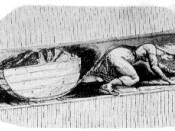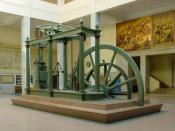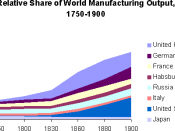Could you imagine working for as long as 18 hours a day, six days a week? How about in 80 degree weather, doing tedious and often dangerous work? To make matters worse, what would it be like to be constantly hungry and tired, knowing that you would face harsh and hurtful punishments if you didn't meet the demands? During much of the Industrial revolution, this scenario was the norm for men, women, and children of the working class. The pay was barely enough to live on, and the workers returned home to crowded and unsanitary apartments, overflowing with disease. Although various government reform programs later made work and life a little bit nicer for the people, it still wasn't paradise. In A Tale of Two Cities, Charles Dickens wrote, "it was the best of times, it was the worst of times." During the early part of the Industrial Revolution, workers only saw the worst.
However, later on they began to see better.
The Industrial Revolution began during the 18th century, and refers to the change from "work in the home to work in the factory" ('Industrial Revolution Notes'). "In 1750, 8 out of 10 people lived in the country. In 1850, 5 out of 10 people lived in the country (http://www.asis.com/sfhs/women/sophie.html)." With the introduction of machinery, the working class could make a better living in factories than at home (on farms). Thus many moved to areas surrounding factories/coal mines and acquired jobs manning machinery or mining. They didn't make enough money to afford decent housing, and thus the tenements and slums where they lived were "cramped and poorly maintained, had no running water, poor lighting, and often a single lavatory to be shared by the entire terrace. Up to twelve people shared a room. Garbage was dumped on the street.



Very nice
good essay, bloated useful facts in it instead of empty words.
1 out of 2 people found this comment useful.